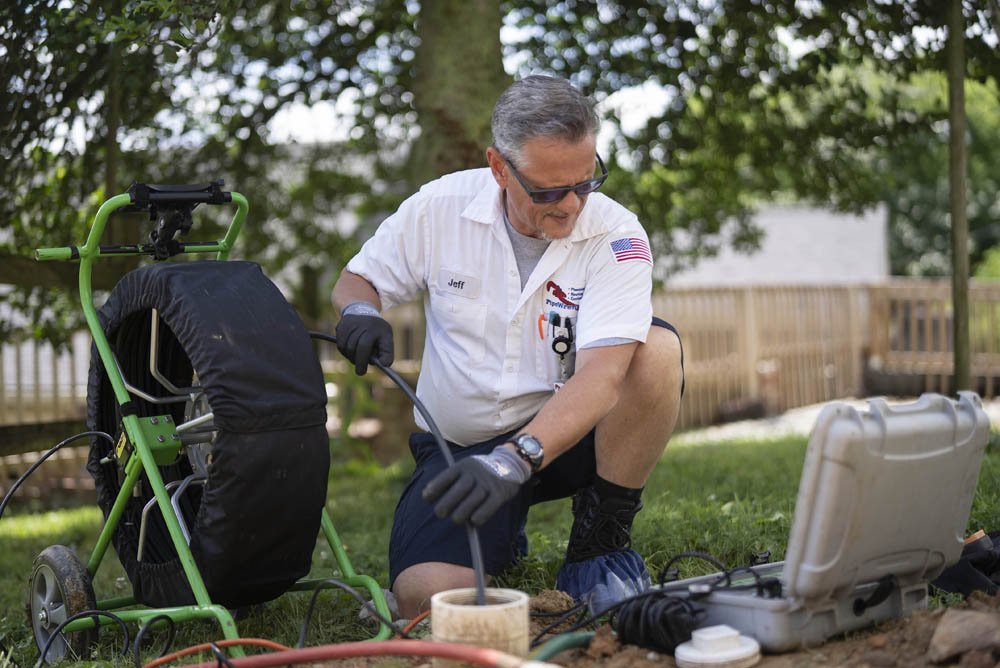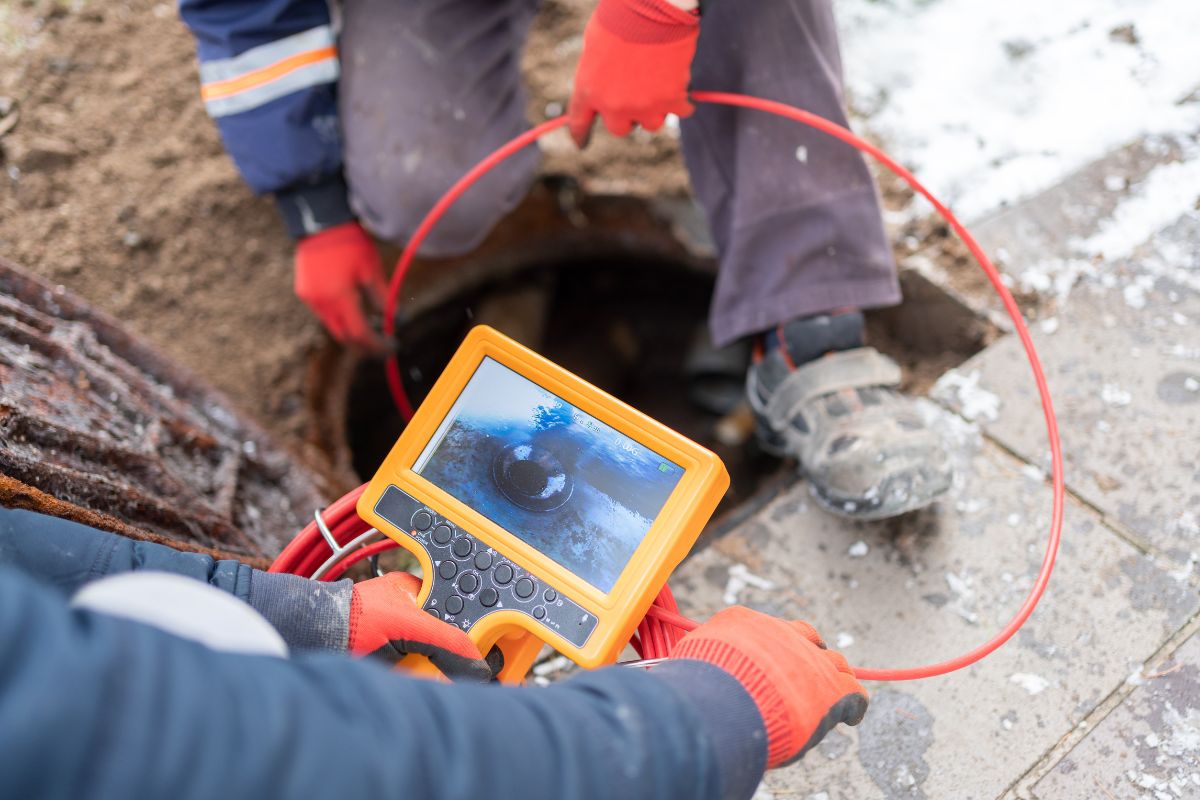Checking Out Advanced Technologies in Sewer Line Inspection CT
Checking Out Advanced Technologies in Sewer Line Inspection CT
Blog Article
Usual Drain Line Problems and Their Solutions: A Property owner's Handbook

Tree Origin Breaches
Tree root intrusions are a substantial and typical issue influencing sewage system lines. As trees grow, their origins normally seek sources of water and nutrients. Sewage system pipelines, particularly older ones made from clay or other permeable materials, provide an eye-catching target. With time, roots can infiltrate little cracks or joints in the pipelines, causing blockages and ultimately creating significant damages. This intrusion can lead to slow-moving drain, sewage back-ups, and even complete pipe failing if left unaddressed.
Early discovery is critical in mitigating the effect of tree origin intrusions. Regular inspections using video clip cam technology can recognize origin visibility prior to it ends up being an extreme issue. As soon as identified, there are several methods to attend to the concern. Mechanical augers or rooter solutions can cut with the origins, giving a temporary solution. For a much more long-term service, chemical origin killers can be used to inhibit additional growth within the pipes. In serious cases, pipeline relining or substitute may be necessary to restore the honesty of the sewer line.
Implementing safety nets, such as planting trees far from drain lines and utilizing origin obstacles, can reduce the danger of future invasions, thus securing the functionality of your drain system.
Pipe Rust
Corrosion in sewer pipes is a prevalent concern that can drastically compromise the stability and functionality of a sewer system. Normally occurring in steel pipes, such as cast iron or galvanized steel, deterioration results from long term direct exposure to dampness, chemicals, and other destructive representatives located in wastewater. Over time, this process weakens the pipe wall surfaces, causing leakages, breaks, and eventually, pipeline failing.
The main types of pipeline rust consist of consistent rust, where the whole surface of the pipe corrodes uniformly, and local deterioration, such as pitting or hole corrosion, which impact specific locations of the pipeline. Determining the early indicators of corrosion, such as blemished water or uncommon smells, is vital for timely treatment.
Preventing pipeline corrosion includes normal upkeep and assessments. Using protective finishes, using corrosion-resistant materials like PVC or polyethylene, and mounting cathodic security systems can significantly extend the lifespan of drain pipes. In situations where deterioration is currently substantial, trenchless pipeline rehab techniques, such as pipeline lining or pipeline bursting, offer reliable solutions without the need for comprehensive excavation. Ultimately, proactive administration and prompt repair work are vital to mitigate the harmful effects of pipe deterioration on drain systems.
Blockages and clogs
Clogs and clogs are among one of the most turbulent and usual concerns affecting sewage system lines. These obstructions can occur from a selection of resources, including the buildup of debris such as oil, food, and hair fragments, as well as the breach of tree roots seeking dampness. Over time, these products build up, narrowing the pipe and eventually causing complete obstructions that can cause wastewater to back up into homes.
Preventive procedures are vital for alleviating the danger of blockages. Routine upkeep, such as routine hydro-jetting and making use of enzyme-based cleansers, can help maintain pipelines clear of debris. Home owners should also bear in mind what they get rid of down their drains; staying clear of oil, coffee grounds, and fibrous vegetables can considerably reduce the chance of blockages.
In extra serious situations, video examination equipment can be used to situate from this source and diagnose the trouble, making certain that the suitable service is applied effectively. Timely treatments and normal evaluations can assist preserve the integrity and performance of sewage system lines.
Leaking Drain Lines
Beyond clogs and obstructions, leaking sewer lines provide a considerable worry for property owners and districts alike. These leakages can result from different elements, including pipe deterioration, shifting soil, invasive tree roots, and put on and tear in time. Left unaddressed, leaking sewage system lines can trigger substantial home damages, advertise mold and mildew development, and pose major wellness risks as a result of the contamination of groundwater and soil.

Repair approaches depend on the intensity of the leakage and the problem of the drain line. Small leaks might be settled with trenchless repair methods, such as pipeline cellular lining or pipeline bursting, which are less invasive and quicker to complete. In more serious cases, standard excavation and substitute of the influenced pipe section may be essential. Consulting with a qualified plumbing professional makes certain an exact diagnosis and ideal solution to reduce the concern properly.
Sewage System Line Bellies
When it concerns drain line issues, one specifically difficult issue is the formation of drain line tummies. A sewage system line tummy occurs when an area of the pipeline sags or dips, developing a reduced area where waste and particles can gather. This can result in reduce drain, repeating clogs, and possible damage to the pipe over time.
The root causes of drain line bellies are differed. Poor setup methods, dirt disintegration, ground settling, or changes as a result of temperature level modifications can all add to the formation of these droops - sewer line inspection ct. Recognizing a sewer line stomach generally calls for a professional inspection utilizing a sewage system video camera to identify the precise place and level of the trouble
Resolving a sewer line stomach typically entails excavation to get to the damaged pipe section. Once accessed, the drooping part may require to be changed or repositioned to make certain correct slope and drain. In many cases, trenchless repair approaches, such as pipeline lining or pipeline bursting, can be employed to reduce interruption while resolving the concern.
Preventative measures, consisting of regular assessments and directory ensuring appropriate setup, can help alleviate the risk of sewage system line stubborn bellies. House owners should stay cautious for signs of water drainage issues and look for specialist assistance at the initial sign of trouble.
Final Thought
Finally, addressing typical drain line problems such as tree origin invasions, pipeline rust, clogs, leaking drain lines, and sewer line bellies is essential for maintaining a effective and functional her response system. Early detection with video clip inspections and the execution of both short-lived and permanent services can mitigate these concerns efficiently. Routine upkeep techniques, consisting of critical and hydro-jetting tree placement, additional add to the prevention of these troubles, thereby guaranteeing the long-lasting integrity of drain systems.
Corrosion in sewage system pipelines is a widespread problem that can significantly compromise the integrity and functionality of a sewer system.When it comes to sewage system line issues, one specifically difficult issue is the formation of sewer line stomaches. A sewage system line tummy takes place when an area of the pipeline droops or dips, developing a low area where waste and particles can collect. Identifying a sewer line tummy typically requires a specialist inspection using a sewage system video camera to pinpoint the specific location and degree of the trouble.

Report this page